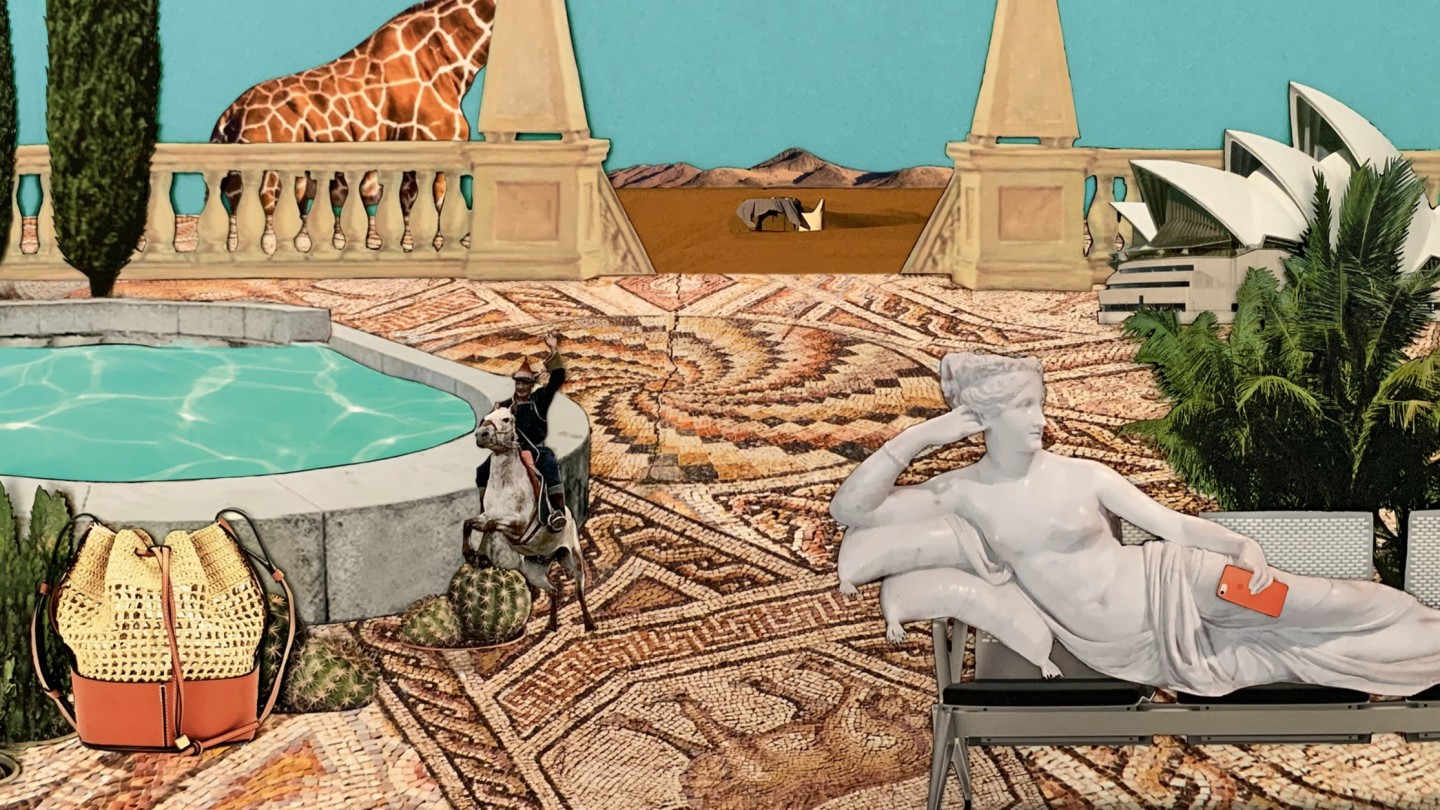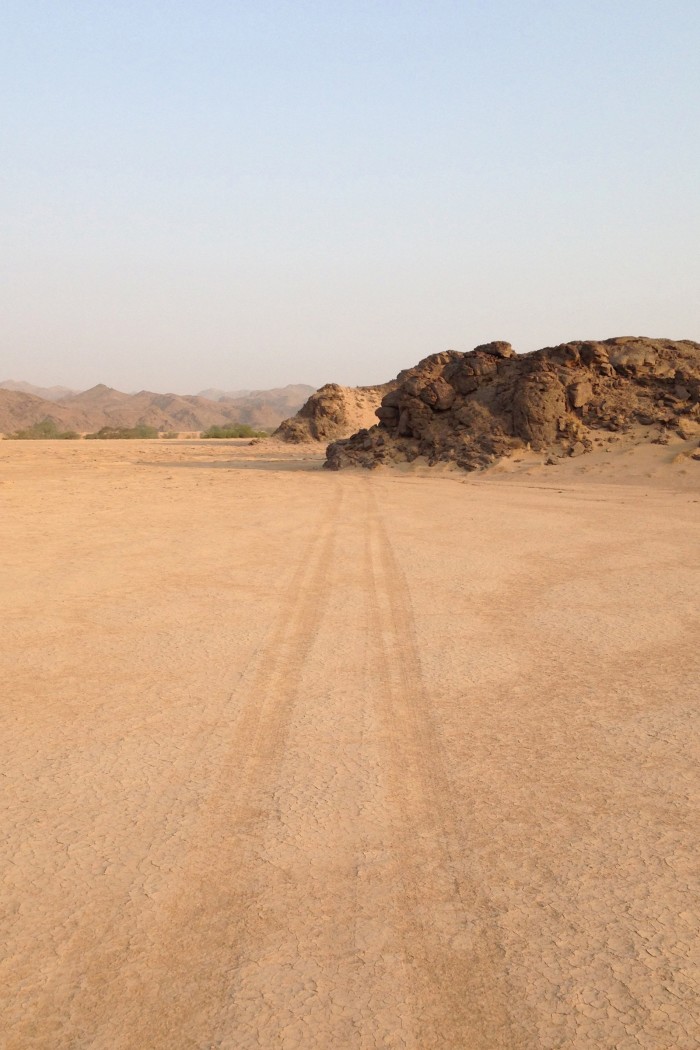Travels in my iPhone

Roula Khalaf, Editor of the FT, selects her favourite stories in this weekly newsletter.
Midday on a late-January Sunday. Across the city, church bells are pealing, cascades of sound colliding above the rooftops. I barely hear them, because the windows are shut tight against the numbing cold, and because familiarity breeds indifference, sometimes even to the sublime. Pandemic aside (how glib, and awful, that once-unimaginable phrase), it’s been a rough winter in Italy. Gelid rains have pummelled the country, turning rivers into dun-coloured torrents that submerge banks and flood monuments on their frictionless route to the Mediterranean. Occasionally I stand on the Ponte Fabricio and stare down at the Tiber, watching the water roil and plait. It’s mesmerising. It’s also weirdly envy-inducing. The Tiber, at least, is going somewhere. I, like you, am very much not.
There are admittedly far worse places to be grounded. But even one that is picturesqueness itself tends to lose its lustre when it’s a freeze-frame. Since last June, I have boarded a plane exactly once, to London. I’ve no real idea when I’ll be en route to anywhere properly far away again.
So, like millions of people, I’ve taken to escaping this picture by delving into the 9,958 others that live on my iPhone. Not something I was in the habit of doing prior to this lockdown: photo dives were precision strikes for jogging my recall while writing – I went in, I checked a visual reference, I was out. But a few weeks ago I started peregrinating aimlessly along the arc of almost nine years’ worth of images. It’s the only wandering I’m doing. It’s what has to pass for travel, in these solitary, claustrophobic days.

In the Argentine wetlands of Iberá (October 2018), I thrill again, albeit more faintly than the first time, to a kind of exotic I barely remember. My videos pan across a shocking-green plain, bristling with palms and ceiba trees whose outer-space blooms are fat and succulent as fruit, crowded with docile capybaras grazing in clusters – guinea pigs the size of Labradors, preposterous and adorable. A week later, I discover that I still possess entire grids full of the grass hills and steppes of Mongolia (May 2018), rolling away as far as the eye can track them, lit by neon-azure dawns and tea-rose dusks with which I was clearly slightly obsessed. Portraits, too, of the nomadic herders I was shadowing: dashing horsemen and capering children, their obsidian hair framing flinty grins and cheeks lit with tiny bonfires of pink.
One thing I realised quickly: a blend of longing and satisfaction is the ideal, but the balance is crucial. Two times now I have retreated to Luang Prabang (September 2019; January 2020) and my many close-ups of painted door frames and gilded serpentine temple finials, dust motes sparkling in sleepy guesthouses, Mekong longtail boats with prows like blades. They are a compendium of dizzying detail and colour that is the perfect antidote to my mercilessly unchanging view of wet cotto roofs and low quicksilver sky. Images of the Christmases I’ve spent in Sydney, on the other hand, prove to be too much summertime gorgeousness in this literal winter of lockdown discontent – an exercise in masochism, like rereading texts from an old flame you still pine for who’s off living his best life half a world away.
Thumbing randomly through summer 2014, the multi-hued blur coheres into a streak of uniform, diffuse beige – the Skeleton Coast, in northwest Namibia, where the desert cedes to the Atlantic Ocean. The air spins with opalescence; it was sharp with salt, though I was at least five miles inland. I stare into my palm, willing even just shadows of sensations back. Sudden coolness on my bare arms; desert silence, which is its own presence, in my ears; salt on my lips. You could taste it. I had tasted it, I remind myself, as I sped across a landscape that looked like Mars; and is now, years later and 4,500 miles away, as unfathomably distant.


Another lesson this ritual has bestowed: you know a place is a true place of your heart when pictures of it evince a spontaneous, full-body, five-senses recollection. Namibia, spectacular and haunting as it was, isn’t one. Nikoi, a minuscule island in western Indonesia (September 2015), is. Its “villas” are thatch and reclaimed driftwood. The beach shape-shifts extraordinarily with the seasons; in my photos, it’s arching northward, an inverted comma cupping a shallow lagoon. Here is my four-poster bed; here a path bowered in rainforest; here seashells I gathered, arranged in a bowl. They all animate almost effortlessly in my mind. The white netting that canopied my bed had dipped and spiralled in the constant offshore breeze like a living thing. An entire, blissful afternoon unspools from that lone image of seashells: wavelets in the lagoon plishing against my calves, the pleasant crick in my neck from searching the shallows, the damp sandy heft of them clutched in a fold of my sarong. The rainforest emanated a machine whine of insects, a constant single note that rings with total clarity in my memory. It evokes in turn the heavy equatorial air, traces of diesel smoke and tuberose and vegetal decay floating in it – the atmosphere I moved through once, in another life I’d had in southeast Asia.

Which is, in truth, what I am revisiting. Not just a holiday, or a landscape: my life. Because – fair warning – that is where a scroll back into all those tiny captures might take you, whether you’re down for the ride or not. Our pasts are infinitely more complex than photos of them can ever be, and nowhere near as given to neat curation. If we look at all closely – if, when we journey backward in our phones, we really go there – we can’t not see who, and how, we were then, along with where we were.
April 2013: a desert camp deep in southern Morocco. A picture of a lone table atop a dune that has been sculpted into a plateau by an overnight wind. Dressed in sky-blue linen, set for one, with painted ceramics and antique silver. All around it, an absolute distillation of emptiness.
The image is perfect. You need to save that for your book jacket, wrote a friend to whom I later emailed it. And it’s true that this is, through a very specific lens, a picture of what my life looked like in that moment.
What I was also living in that moment, however, was something I had for months been doing a great deal of emotional gymnastics to avoid – something that, in the pitiless volume of that landscape, it became impossible for me not to reckon with: the acknowledgement, final and total, that I was probably never going to have a child.
Here’s what I remember when I look at this picture: that when I took it, two seams of thought were ribboning around and across each other in my mind. One was: how stunning the Sahara, how chic the mise-en-scène, how singular the moment. How lucky I am. The other was that the one abiding narrative of my life, whose inevitability I’d taken as an article of faith since I was a girl playing with dolls, was almost certainly not ever going to come to pass. I sat at that gorgeous table, admiring the view; I was also contemplating this small, new crater at my centre. While I poured coffee as the sun tracked higher in the sky, I was trying to imagine how the kinesis of motherhood deferred works: how I would ever manage to redirect all that expectation and energy and inchoate love and patience and creativity and connection – left, now, with no clear place to go.
I’d not bargained on a pretty picture of a table in Morocco occasioning such a visceral trip down memory lane. I probably should have. Because such is the discursive nature of memory. And, it turns out, of random scrolling on your iPhone, where memory will defy the containment of your best framing efforts, and speak from far beyond the edges of pixels.


What’s edifying in all this is that those pasts were once the present. Meaning that what you thumb forward to and click on after that was once your future. Eventually, travelling in your phone, a context for your life obtains. Which is also what happens when we travel this great, wide, unpredictable world – but again, only if we’re inclined to really look.
Earlier this morning, I noticed the date and realised that it was exactly a year ago that I moved to Italy. 24 January 2020: a view out the window of a flat in Trastevere. An enfilade of façades – apricot, peppermint pink, yellow – moves in diagonal toward the rise of the Janiculum hill. Calabrian pines unfold along it. An abundance of sunlight spills down on everything like a benediction, of the kind that living here makes you learn to expect.
I posted this photograph to my Instagram feed a few days later. “View from the new chapter not at all bad,” reads the caption. A bit smug. Clearly I could have had no idea then that this same chapter would also forever include the interval of these short-but-so-long, colourless days. But had I not kept venturing back into my phone to remind myself that colourless days eventually end, I’d perhaps not have been reminded of just how fortuitously a chapter can start; and that there is something hopeful, and inviolable, in having no idea where it – and I – might go next.
Comments